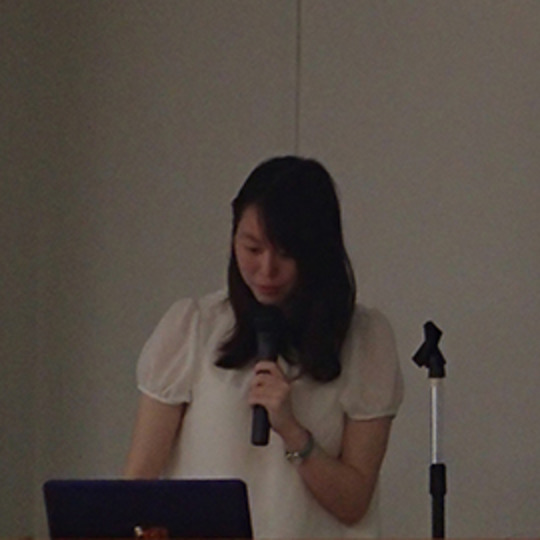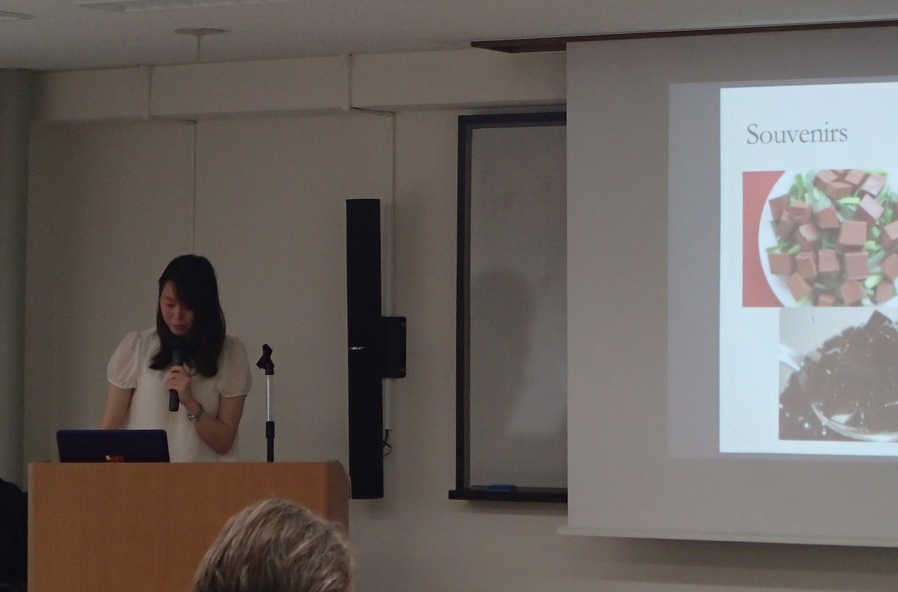
IHS Report: Graduate Student Conference “Media Histories, Industries and Identities in East-Asia: Negotiating Local, Regional, Transnational” Lillian Tsay
- Time and Date:
- 10:40-12:10, Wednesday, May 29, 2015
- Location:
- Main Conference Room, 3rd Floor, Institute for Advanced Studies on Asia, University of Tokyo (Hongo Campus)
- Organized by:
- The "Human Mobility and Borders" Unit, Integrated Human Sciences Program for Cultural Diversity, The University of Tokyo
- Co-organized by:
- The "Information, Technology, and Society in Asia" Program, The Graduate School of Interdisciplinary Information Studies, The University of Tokyo.
The panel "Media Histories, Industries and Identities in East-Asia: Negotiating Local, Regional, Transnational" was composed of four talks from the graduate students from the GSII, including myself, an IHS program student. We were fortunate that professor Abé Markus Nornes from the University of Michigan accepted our invitation to be our discussant.
The first presentation was given by the first-year Ph.D. student Mr. Sten-Kristian Saluveer, and his topic was "Challenging East-Asian media space: Case studies from regional co-production markets in Japan, Hong Kong and South Korea." Mr. Saluveer spoke about how the global film production market is currently exhibiting a tendency to pursue transnationalism, especially at the sites of international film festivals, and in this case he focused on Busan, Hong Kong, and Tokyo's film festivals.
I was the second presenter, and my topic was "The Imperial Gaze: The Staged Authenticity of Taiwanese Cuisine in Colonial Travel Media." In this presentation I examined several representative texts on tourism during the Japanese colonial period in Taiwan. Following Dean MacCannel's application of Goffman's social theory, I tried to argue that Taiwanese cuisine was placed in-between the "front" and "back" stages in tourism, whereas local culture was only presented as a tool for "staging the authenticity."
The third presentation was by the first-year student Ph.D. first-year student Kyohhei Kitamura, and his topic was "Kyo Machiko's Film Body: Star Actress as a Vamp Type of Postwar Japan." Mr. Kitamura argued that Japanese audience's consumption of the female star Kyo Machiko's body had deep relations with the postwar and occupation trauma in order to forget the history, and that she also created a new female image of "the vamp" which gained her much popularity.
The last presentation was done by the first-year Ph.D. student Kazuto Kondo, and his topic was "'Time Lag' in the Film Reception: The influence of the Historical Change of Distribution System on the Film Experience." Mr. Kondo's presentation was about the "manuscript" features of cinemas in early modern Japan when film technology was first introduced, and thus the audiences outside of Tokyo could hardly get a good theater experience. Film audiences were divided by urban and rural hierarchies and thus formed the "time lag" film-reception experience.
After all our presentations, Professor Nornes gave each of us a brief comment. He suggested that all the topics were telling stories of binary oppositions, respectively national versus transnational, front stage versus backstage, transnational versus local and manuscript versus printed. The presentations of each of us was dissolved or built on those binary concepts. Professor Nornes then gave each of us some comments regarding our presentations. The connection between the four talks was that we were all discussing on visual culture even though we approached it from different contexts, and this was a good chance to share one's research and gain feedback; moreover, it was an exceptional opportunity to expand one's academia circle.



